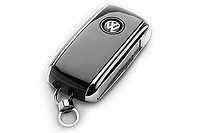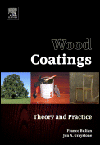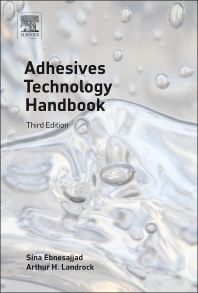Green Quality Assurance with Plasma


|
|
Fig.1. Photo Plasmatreat
The dual effect of the atmospheric plasma treatment far outweighs the effectiveness of conventional systems (photos: Plasmatreat).
|
Car manufacturers are forever placing greater demands on the quality and environmental credentials of paint processes for the plastic components used in their vehicle interiors. To meet these requirements, one of the leading global car suppliers pretreats millions of switches and controls with atmospheric-pressure plasma each year.
The painted plastic switches on a dashboard are touched thousands of times during the life of a car; sometimes gently, sometimes roughly, sometimes with clean fingers, and sometimes with dirty ones. But no matter how they are treated, the paint must stay intact. And furthermore, even after years of use, they should look and feel just the same. BMW, for example, requires the paint used for rotary switches to be sufficiently wear-resistant to withstand being turned through 360° no less than 60,000 times before the paint shows any signs of damage. Standard pushbutton switches, such as CD or climate controls, must even be able to withstand at least 100,000 touches. This corresponds to an assumed load over a 17-year period – regarded by the Munich-based car manufacturer as the total life cycle of the vehicle. Other premium brands have similar specifications, which means, by analogy, that the supplier must offer virtually the same high standard of quality to all its customers.
No Easy Matter

|
|
Fig.2. Photo Plasmatreat
The Openair plasma system (3rd unit from the front) takes up only one meter of a painting line with an overall length of 25m.
|
Pretreatment of the material surface is the starting point for meeting the rigorous quality requirements of the paint process. A flawless paint finish and long-time stable adhesion cannot be achieved without microfine cleaning and in most cases without activation of the substrate. Different techniques are available for both cleaning and activation and it is advisable to find out exactly which is most suitable for the intended purpose. Since the solvent-based primers often used to increase adhesion are harmful to the environment and costly to dispose of, it is clear that in an age of greater environmental awareness, car manufacturers must seek alternative solutions; the trend is shifting towards water-soluble paints and environmentally friendly pretreatments.
Some years ago when Daimler asked its supplier TRW Automotive Electronics & Components GmbH in Radolfzell, Germany (a subsidiary of TRW Automotive, Michigan) to provide a further cleaning stage – in addition to the ioniser already used to remove dust from components – and was also planning to switch to water-based coatings, the supplier was faced with a problem: the power wash process requested by the car manufacturer proved to be unworkable right from the test phase.
Kerstin Tietz, Senior Engineer in the Industrial Engineering, Painting & Laser Etching division at TRW Radolfzell, recalls, “Our tests showed that power washing simply blasted away our tiny polycarbonate (PC) components, only a few centimeters in diameter, or blew them onto one another so that they got scratched. On top of that, the water got trapped in the jig molds. We drilled holes in the jigs and even modified the containers, but it was no use”. A CO2 treatment that was considered as a possible alternative proved equally disappointing; again, the components were blasted out of their molds. Moreover, this method was not just intolerably loud, but also expensive, as extra space had to be created outside to accommodate the tanks.
Although there was no question that both methods offered good cleaning power and would have been entirely appropriate for heavier components, what they lacked was activation capacity. This meant that an additional system would have been needed to provide the activation required for water-based coatings. TRW initially thought that fluorine technology would provide the answer, but preliminary trials proved otherwise; after treatment, some of the PC components were iridescent blue, and some transparent. Furthermore, they had to be sent to an external service provider for the pretreatment, and this dependence was too great a risk for the manufacturer, who works in series production. And besides, the process was not environmentally friendly.

|
|
Fig.3. Photo Plasmatreat Six rotary plasma jets work in-line around the clock. Each week they clean and activate 180,000 visible parts made from PC and (PC+ABS) blend in a single step. |
TRW conducted further research and discovered a process that not only enabled microfine cleaning and activation of the plastic surfaces in a single operation, but did so without causing any of the problems referred to above, or even creating new ones: Openair atmospheric plasma technology.

|
|
Fig. 4. Photo Plasmatreat
Is the paint finish flawless? Each individual switch component is visually inspected before a laser applies the markings
|
Cleaning and Activation in a Single Step
The plasma jet technology developed by Plasmatreat GmbH in Steinhagen back in 1995 is now used throughout the world in a wide range of industries. The environmentally friendly in-line process works under normal ambient air conditions, thereby dispensing with the need for a vacuum chamber. The system performs three operations in a single process lasting only a matter of seconds: It simultaneously brings about the microfine cleaning, electrostatic discharging and strong activation of the plastic surface.
Activating a material surface increases its surface energy. This is ultimately the most important measure for determining the probable adhesion of a paint or coating. Plastics generally have a low surface energy between < 28-40 dyne. But experience shows that only surface energies above 38-42 dyne offer the right conditions for adhesion. Reliable paint adhesion is conditional on the surface energy of the solid material being higher than the surface tension of the liquid paint. While immediately after injection molding the surface energy of PC components at TRW was only 32-34 dyne it increased to values of 56-58 dyne, and in some cases even in excess of 72 dyne following plasma treatment.
Peter Langhof, Market and Project Manager at Plasmatreat, explained, “The dual effect of microfine cleaning and simultaneous strong activation far outweighs the effectiveness of conventional systems. This produces a homogeneous paint finish and long-time stable adhesion of the coating even under the most challenging load conditions” (Fig. 1). The rise in temperature of the plastic surface during plasma treatment is typically less than 30 °C.
AP Plasma in the Paint Process

|
|
Fig.5. Photo Plasmatreat The integrated control panel (ICP) forms the centrepiece of the dashboard. The plastic switches are pretreated with atmospheric plasma before painting to ensure a flawless finish and an adhesion that will last for years |
Today TRW manufactures sensors, keyless entry systems, and switches and switch mechanisms for systems inside the vehicle designed to enhance control and comfort for car manufacturers such as Daimler and Ford. From injection molding and painting to laser cutting and electronics manufacturing, most of the components are produced, assembled and tested in-house. The first system supplied on loan by Plasmatreat to perform the test runs was quick to gain admirers. Tietz comented, “It was easy to operate, clearly laid out, quiet, safe and didn't take up much space.” After the test phase, a production plant equipped with two plasma jets was initially used. But as volumes increased, a larger painting line was required and Venjakob Maschinenbau GmbH & Co. KG from Rheda-Wiedenbrück was commissioned to integrate a plasma system connected in series immediately upstream of the paint station right from the outset.
In spring 2011 the new 25m long painting line – in which the plasma system takes up only a meter – was up and running (Fig. 2). Six patented type RD1004 rotary nozzles have since been working in-line around the clock (Fig. 3). Each week they clean and activate around 180,000 visible parts made from PC or (PC+ABS) blend prior to painting, ranging from simple 2-D components to complex 3-D geometries such as steering wheel covers. Each individual switch component is visually inspected before a laser applies the final markings (Fig. 4). The TRW factory incorporates all the little switches and buttons into around two million complete ICPs (Integrated Control Panels) per year (Fig. 5).
Summary
A high degree of process reliability takes precedence at TRW and this is achieved through the computer-controlled and screen-monitored plasma system. It enables the factory on the shores of Lake Constance to manufacture several million buttons and switches annually. “Using the Openair technology was the right decision for our company. The system gives me peace of mind,” is how Kirsten Tietz summed it up. She added, “For us the pre-treatment has proved profitable, simple and effective. It has enabled us to meet our customers’ stringent requirements.” Throughput has tripled since the company started using the new painting line with integrated plasma system and stopped using primers. Furthermore, not only has a complete run incorporating six operations been dropped, it has also been possible to save a great deal of time and 90 percent of the energy costs compared with using other cleaning systems and primer activation.
Plasmatreat’s North American headquarters, Plasmatreat USA Inc., is located at 2541 Technology Drive, Suite 407, Elgin, IL. More information may be obtained by contacting Jeff Leighty at jeff.leighty@plasmatreat.com.
Looking for a reprint of this article?
From high-res PDFs to custom plaques, order your copy today!








